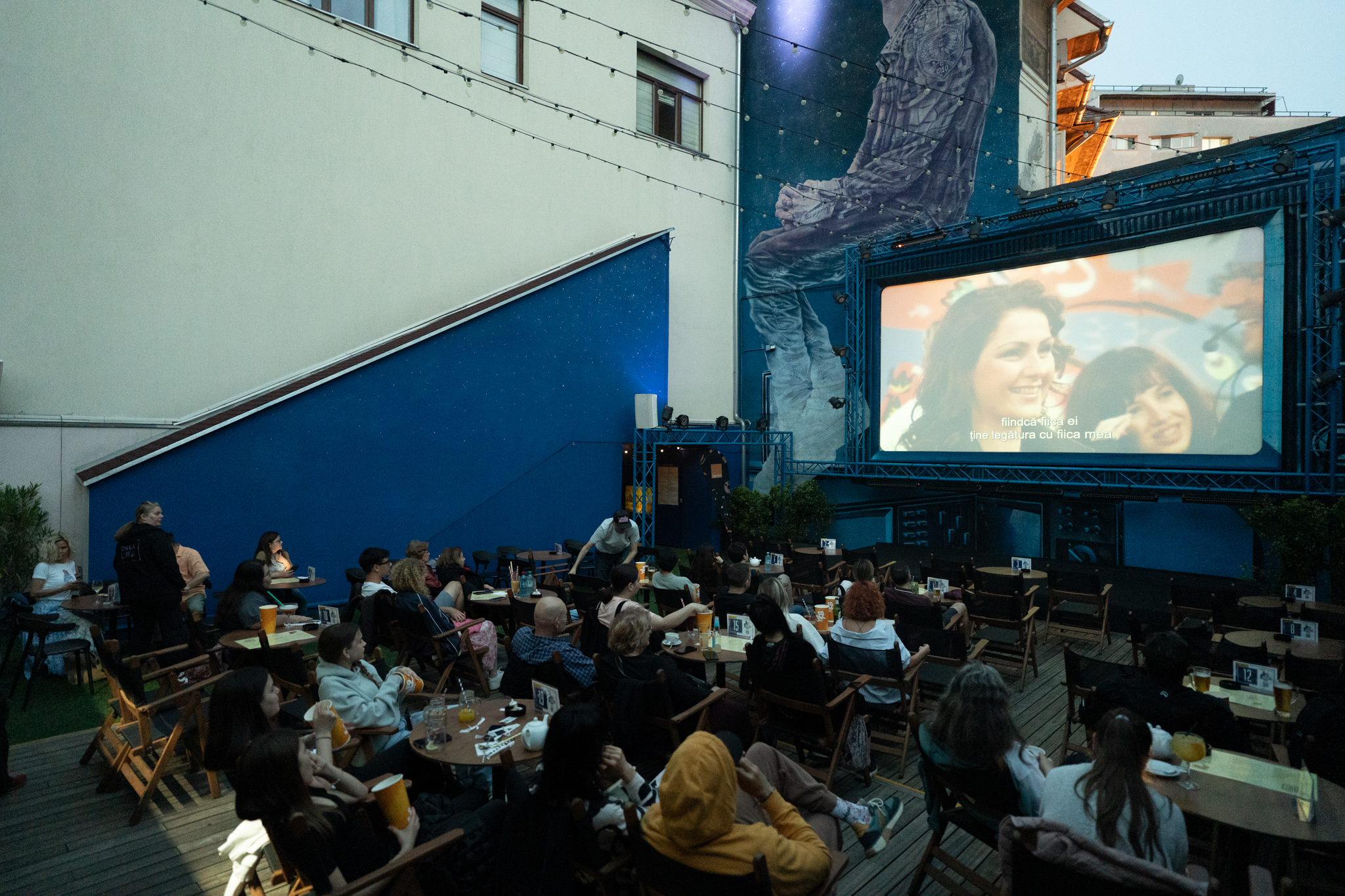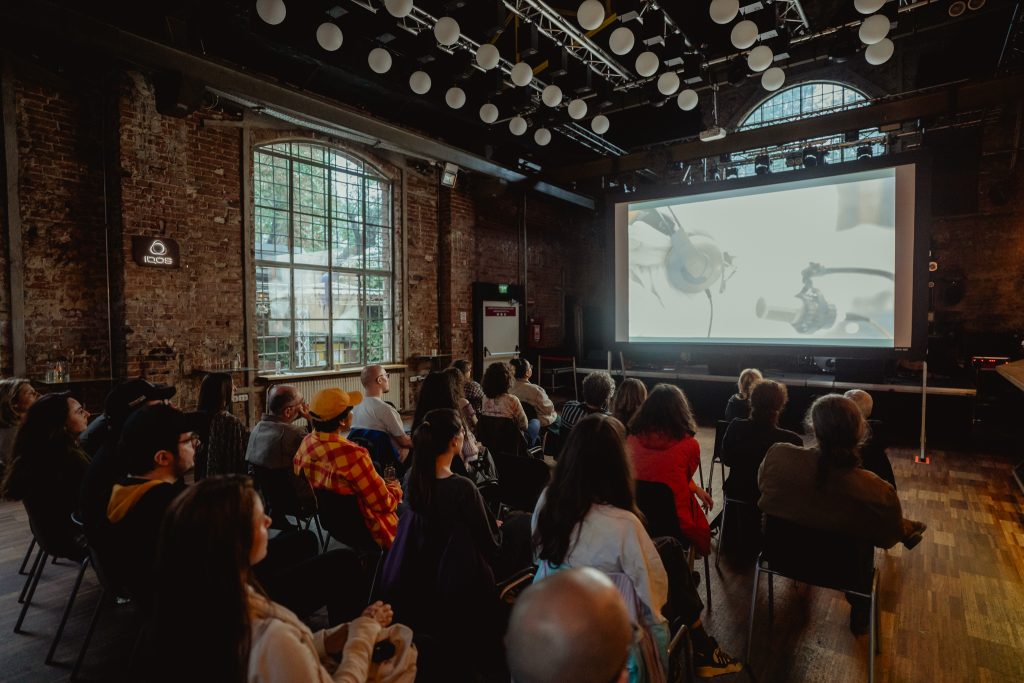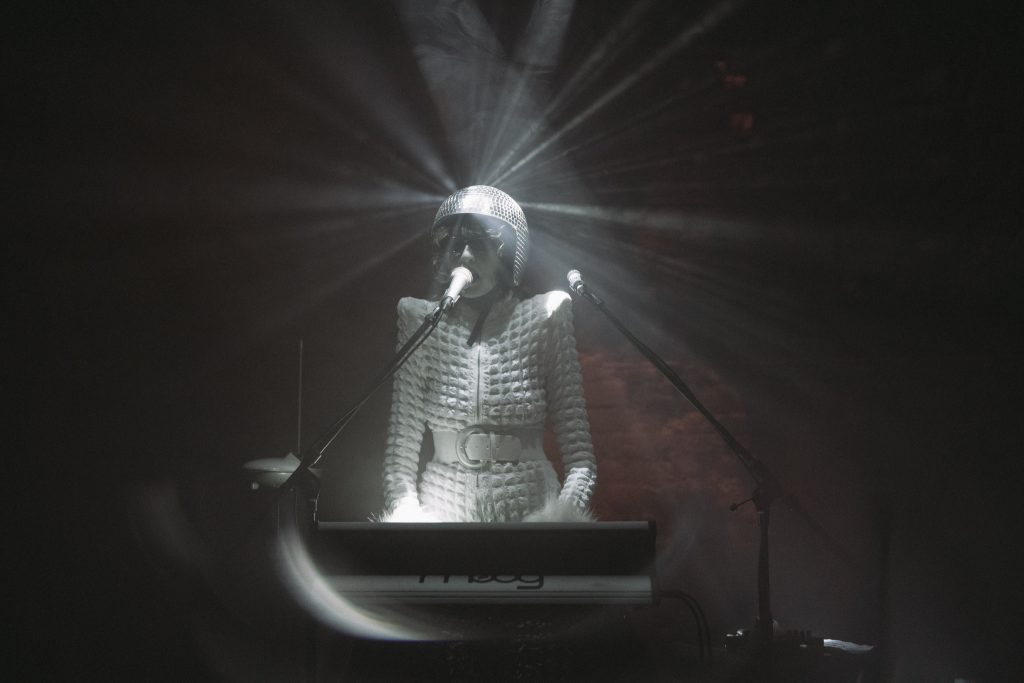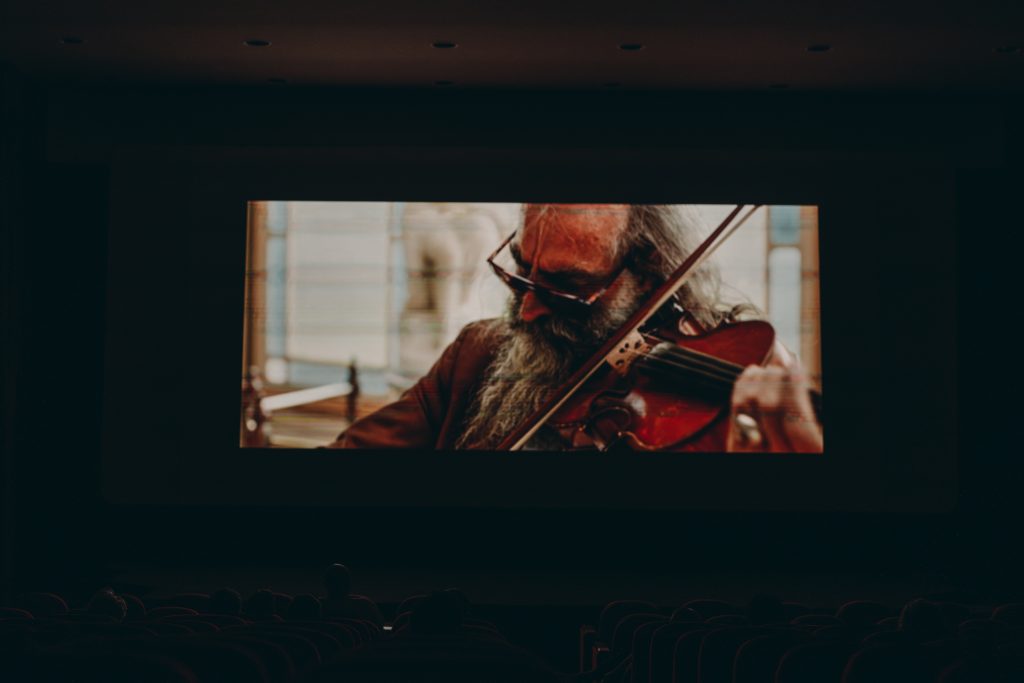Sound & Vision: Inside the 2025 DokStation Music Documentary Festival
Published June, 2025
by Steve Rickinson

The Dokstation Music Documentary Film Festival concluded its ninth annual edition in Bucharest on June 1. Running the week prior, from May 28, across several screening and concert venues in the Romanian capital, Dokstation continues to attract fans of the niche non-fiction genre.
Music documentaries have been around almost as long as the documentary genre itself. However, this newfound popularity of music documentaries reflects a modern convergence of cultural nostalgia, increased accessibility through streaming platforms, and a growing desire among audiences for emotionally nuanced storytelling told through the lens of easily recognizable figures. The global market for music documentaries, valued at $9 billion in 2024, is projected to nearly double by 2033. Streaming platforms notably boost artist exposure, with music streams increasing by over 20% following the release of documentaries. The production of music documentaries has soared, with documentary demand increasing by 44% and production rising by 63% between 2021 and 2023. Notably, successful theatrical releases, such as Moonage Daydream (2022), achieved significant commercial success. Moreover, enduring classics like Jonathan Demme’s acclaimed Talking Heads documentary, Stop Making Sense, show how prominent filmmakers and recognizable subjects elevate the genre’s prestige, blending journalistic rigor with cinematic artistry. Name recognition has also proven crucial, as documentaries about globally iconic artists reliably draw substantial audiences.
The space for music documentaries is not limited to the streaming giants, though. Its film festival platform has also proven lucrative as many markets include these genre-specific events in their cultural calendars, with London’s Doc’n Roll and Barcelona’s IN-EDIT leading the way in Europe. But in Eastern Europe, the options have been limited. In 2016, this changed, at least for Romania, with the introduction of Dokstation. Still Romania’s only dedicated music documentary festival, Dokstation began with the aim to “tell the true stories behind the music,” exploring its complexity and history by featuring national and international films and performers across genres. Also marking an unofficial end to the live event season before attention turns to the seaside, Dokstation is a respite for cinema and culture fans to escape the sometimes suffocating ubiquity of the art house.
The festival utilizes multiple venues across the city for its screenings and performances. The cinema at the Museum of the Romanian Peasant and the inner-city nook, Gradine cu Filme, hosts most of the film screenings, with the Cervantes Institute also participating. Additional screenings and live performances took place at two of Bucharest’s live music institutions: the 16-year veteran of its underground, Control Club and the factory-converted Expirat. These live performances, though not immediately related to any of the films on offer, were an eclectic journey through sound, from Irish art-pop to Malian blues, Romanian legends to Norwegian futurism.

The live artists each brought a respective energy to their performances, many of which were Romanian debuts. Kicking things off at Control Club on May 28 was Irish indie artist Anna B Savage, whose potent and mellifluous voice bridges music, literature, and Irish folktale. Performing simultaneously at Expirat, Mali’s punk/blues outfit, Songhoy Blues. With infectious groove, Songhoy Blues wove stories of the Malian ethnic minorities’ history, culture, and music to a Romanian crowd always up for a trip through West Africa.
May 29 saw Control Club host the intercontinental psych rock trio Al Qassar. Spread across Morocco, France, and the USA, this ‘Arabian fuzz’ collective recalls the sounds of Omar Souleyman riding a Hawkwind through the deep Sahara, perhaps with the Sun City Girls in tow. The date also marked the long-awaited return of Romanian rock legends Partizan, who presented material from their latest album, a tribute to the neighborhoods that inspired them, Clouds Over Salajan.
On May 30, Dokstation was back at both Control Club and Expirat with an evening of avant-garde. At Control Club, Norway’s Ora the Molecule eschewed the detached spectacle of contemporary electronica with a psycho-cosmic libretto for disco existentialism. Her set married melancholia with ritualistic dancefloor hedonism, creating the festival’s most compelling performance. Meanwhile, at Expirat, dark and deviant theatrics were on full display as British alternative-cabaret trio The Tiger Lillies brought a career-spanning concert filled with Brechtian reflexiveness and macabre, gypsy theatre.

While the concerts provided a visceral entry point into global sound, the documentary lineup dug deeper into the histories, politics, and personal stories behind them. Typically, music documentaries come in three forms. There is the concert film, where a single performance or tour is contextualized through a broader narrative. Then there is the traditional music documentary biopic, usually a linear trek through an artist’s life and career. Finally, there is the social documentary that tells its story through a musical element. These films are less common and generally appeal to the topic rather than the subject. Over the years, Dokstation has curated all three, with 2025 leaning heavily into the biopic. With that in mind, these films spanned a wide range of genres and geographies, offering something for most viewers’ interests and tastes. For the rock’n’roll inclined, there were films on Placebo (Placebo: The Search for Meaning), Broken Social Scene (It’s All Gonna Break: Broken Social Scene), and Steppenwolf (Born to be Wild: The Story of Steppenwolf). Pop and pop culture fans were offered Becoming Madonna, LIZA: A Truly Terrific Absolutely True Story, Ace of Base: All That She Wants, Peaches Goes Bananas, and the deconstruction of Sinatra’s classic “My Way.” Reggae was also represented by the story of North London’s The Cimarons (Harder Than the Rock: The Cimarons Story). In terms of local productions, only one Romanian film featured this year: Ioana Grigore’s Leo Records: Strictly for Our Friends.
Some of the best films at such festivals are those that offer insights outside the mainstream of Western genres, travelling around the world. These films use the universal language of music to tell culturally and politically rich stories. The Dokstation program dedicated a significant portion of its films to this. For example, the already mentioned Songhoy Blues feature in the fiery music-in-exile documentary They Will Have to Kill Us First. The struggle of the Western Sahara, one of the world’s last colonies, is depicted in Haiyu: Rebel Singer Mariem Hassan and the Struggle for a Free Western Sahara.
With the introduction of the Cervantes Institute to the venue roster, Spain also featured prominently on the Dokstation program. Sexo, Maracas y Chihuahuas is a portrait of the extravagant showman and Catalan musician Xavier Cugat, who promoted Afro-Cuban and Latin American music to Hollywood’s golden age. Revelando a Mario is an intimate look at Mario Pacheco, founder of influential Nuevos Medios, who was involved with everyone from Ketama to New Order. The Spanish focus also featured two films on the nation’s Romani culture, La Singla and Fernanda y Bernarda.
With all these films to watch, personal taste ultimately plays a significant role in determining which music documentaries are worth watching. Critical analysis takes a back seat to subjective interest. New insights take precedence over production formalities, so listing favorites becomes a matter of personal taste. On that personal list were five films. Disintegration: An Album, A Band, A Generation is the first. A 60-minute doc made for German television, it tells the story of The Cure’s most successful album. Set against the inevitable collapse of the Soviet Bloc in Eastern Europe, the film is a must for diehards of the long-standing goth rock band, who also happened to release one of 2024’s best albums.
Another accessible 60-minute film was the French production, Tell Me Iggy. Not a traditional biopic but an insightful look into the artistry and legacy of Iggy Pop, the film was a welcome departure from biographical linearity. Telling the story of the last true rock star merely days before seeing him live and up close at Dublin’s In The Meadows (June 7) only deepened the resonance. And, for the record, the man (78) still rocks hard.
I Was a Teenage Sex Pistol opened Dokstation 2025, telling the story of Glen Matlock—the original and longest-serving bassist for punk pioneers The Sex Pistols. With Matlock, a special guest of the festival, answering a lengthy audience Q&A following the screening, I Was a Teenage Sex Pistol views the iconic band through a lesser-known lens. But rest assured, the anarchy, thievery, and angst of The Sex Pistols are all still there.
My true niche film for Dokstation was Salad Days: A Decade of Punk in Washington, D.C. This remastered 2014 film tells that story with clarity and punch. From Bad Brains to the straight-edge of Minor Threat, to pre-grunge pioneering Fugazi, to the DIY label Dischord, Salad Days is a true snapshot in time of a punk era that can hold its own against anything from the Bay Area or London.

In my opinion, the finest documentary of the programme was Ellis Park. A beautifully shot documentary from Justin Kurzel, one of Australia’s finest filmmakers across all genres, Ellis Park delves into both Warren Ellis’ personal universe and his sprawling sanctuary for endangered animals in Sumatra. Not for the squeamish, especially those who are triggered by images of animal abuse, Ellis Park is one of those films that transcend the music documentary genre, becoming something universal that celebrates both empathy and creativity in equal measure. It was a shame that this screening at the Museum of the Romanian Peasant was sparsely attended, with many missing the Romanian premiere of one of the finest documentary films of the year.
The Dokstation Music Documentary Film Festival is a welcome staple of the Bucharest cultural calendar and a refreshing alternative to the traditional cinema that the city tends to prioritize. In a place where genre and niche offerings are scarce, it provides a space not only for film discovery but also for tangible music discovery. The crowds for each are visibly enthusiastic, curious, and knowledgeable. The film curation is diverse and relevant. Its musical acts are quirky and energetic.
Text Steve Rickinson
Photo Miluta Flueras
This article is brought to you as part of the EM GUIDE project – an initiative dedicated to empowering independent music magazines and strengthen the underground music scene in Europe. Read more about the project at emgui.de.
Funded by the European Union. Views and opinions expressed are however those of the author(s) only and do not necessarily reflect those of the European Union or the European Education and Culture Executive Agency (EACEA). Neither the European Union nor EACEA can be held responsible for them.